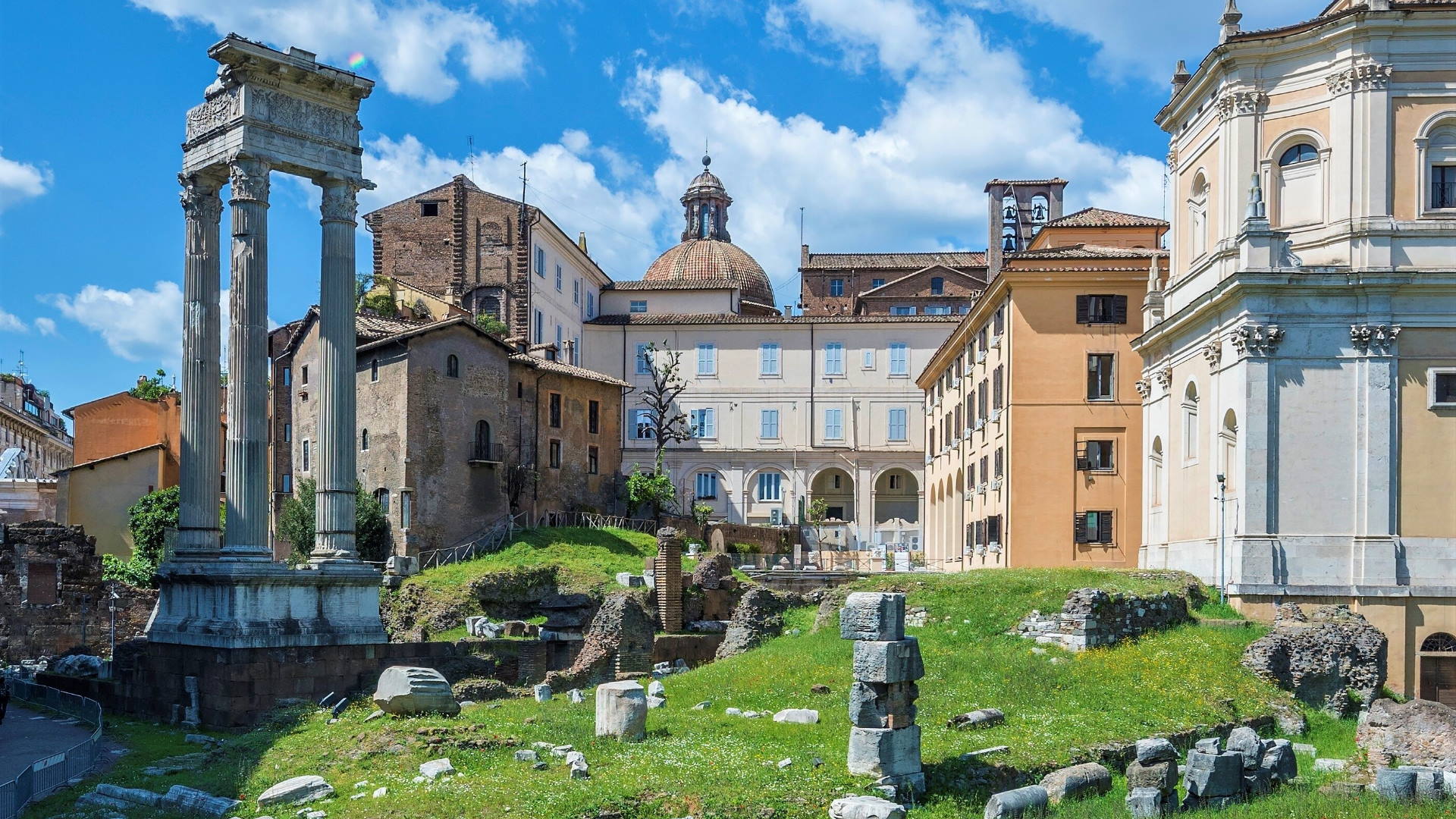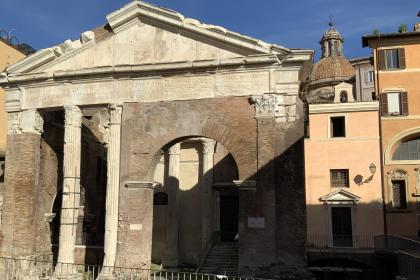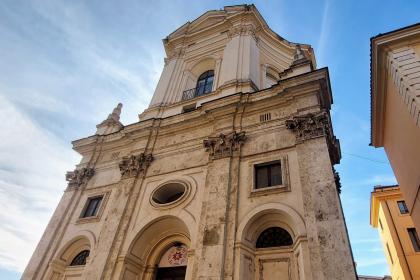
On the right of Portico di Ottavia, in the Hebrew district, the remains of a temple dedicated to God Apollo are still visible today near to the Theatre of Marcellus. It was built between 433 and 431 BC because of a plague and vowed to Apollo Medicus (the healer).
The temple is called of Apollo Sosiano from the name of the consul Gaius Sosius, who in 32 BC rebuilt completely the building enriching it with many works of art. The temple was on a vary large platform, was hexastyle and pseudoperipteral with semicolumns on each side of the cella. The cella, itself, was richly decorated and filled with works of art, like a real museum and often there were held senate meetings. A reconstruction of the pediment of the temple, showing the battle between the Greeks, including Herakles and Theseus, and the Amazons, in the presence of Athena and Nike, is exhibited at Centrale Montemartini. The marble sculptures are rare Greek originals, brought from Rome in the Augustan period to decorate a cult building.
A small circular monument, from the area between the temple and the Theatre of Marcellus has also been partially reconstructed, which can be tentaively identified as a basin of purifying water mentioned in the written sources.
Beside the Temple of Apollo Sosiano, there are the remains of the Temple of Bellona, built by Appio Claudio Cieco and vowed to the ancient Roman Goddess of War in 296 BC, following his victory on the Etruscans. In this temple the senate used to meet the magistrates that had the "imperium", who could not go beyond the pomerio, and the victorious generals for whom they had to decide the triumph grant. At the beginning of the war against Pirro, in front of the Temple a "columna bellica" was placed where the symbolic rite of declaration of war was done.
At the end of the 30s, during the excavations for the reconstruction of the Church of Santa Rita, the ruins of a portico that went all along the east and north side of the Temple of Bellona were found. It is constituted by a double row of pillars, part of them in peperino and part of them in bricks, connected by round arcades. The floor is made of travertine slabs. It is possible that this construction was part of the system of the portico of Foro Olitorio.
The Portico of Octavia

 Condividi
Condividi
Centrale Montemartini

 Condividi
Condividi
Sala Santa Rita

 Condividi
Condividi
Information
 Condividi
Condividi
Location
To find out about all accessibility services, visit the Rome accessible section.











































